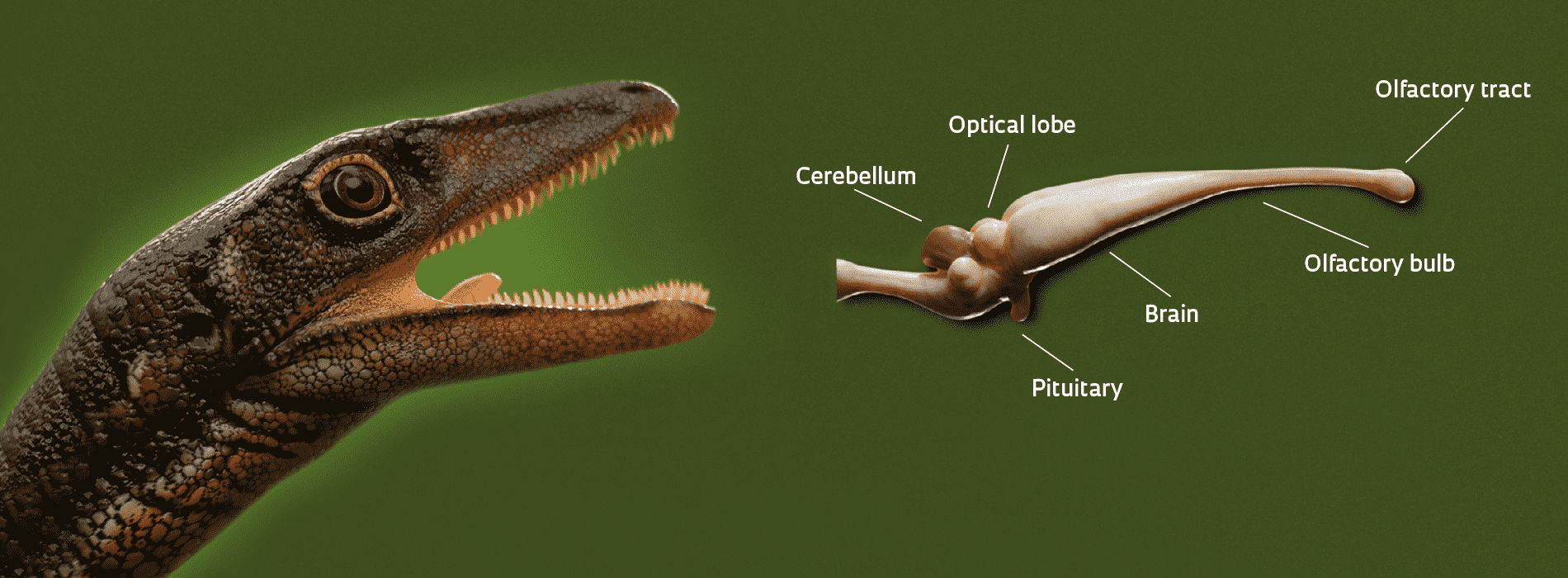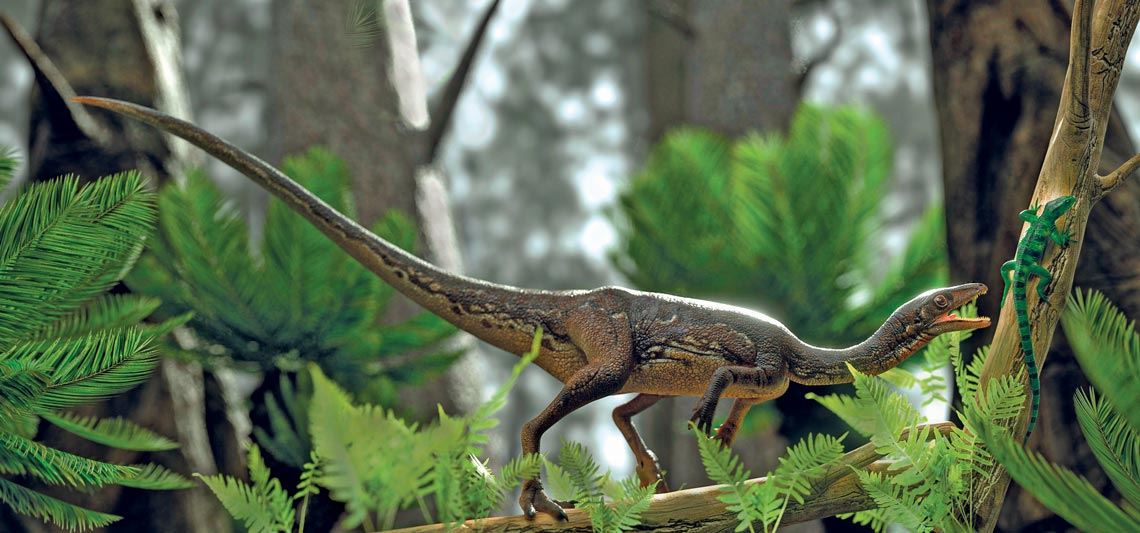The brain of a well-preserved specimen of Buriolestes schultzi, one of the oldest known dinosaurs, has been reconstructed using computed tomography, suggesting an unusual evolutionary path for one of the most important lineages of this extinct group of reptiles: the sauropods. The species, which lived 233 million years ago in the region of what is now São João do Polêsine in Rio Grande do Sul, is considered to be the most primitive of the sauropodomorpha, although its anatomy is quite different to other species in this lineage, composed mainly of four-legged herbivorous giants with long necks, such as the brachiosaurus and diplodocus. B. schultzi was small, bipedal, and carnivorous. It was about 0.5 meters (m) tall and 1.5 m long, weighing in at 6 kilograms. But its cognitive ability seems to have been greater than that of the large sauropods that emerged 100 million years later (Journal of Anatomy, November 3). In proportion to its body weight, its brain was larger than later sauropods. “This is an intriguing fact, since in many vertebrate lineages, brain size tends to increase over time, not decrease,” says paleontologist Rodrigo T. Müller of the Federal University of Santa Maria (UFSM), the study’s lead author. Brain structures linked to vision were also more developed in B. schultzi than in other sauropods, particularly the olfactory bulb.

Márcio L. Castro
A three-dimensional model of its brainMárcio L. Castro

